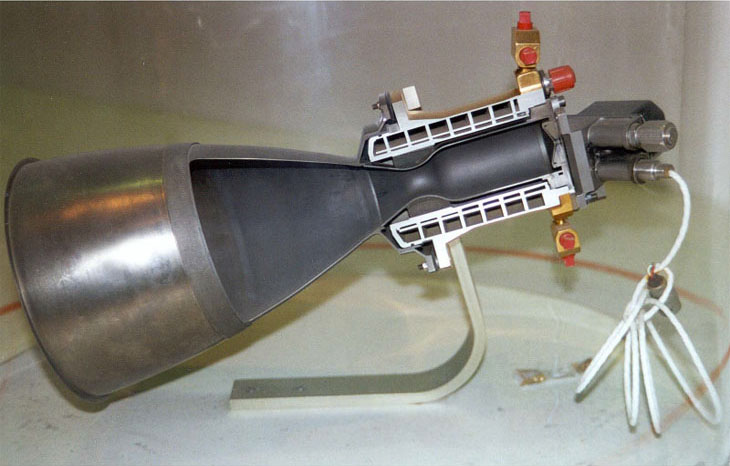
Credit: National Air and Space Museum, Smithsonian Institution
This is a cutaway of the Radiamic liquid-fuel thruster, capable of generating about 100 pounds of thrust. It was designated the C-1, or "Common Engine" by NASA. The C-1 was developed in 1965 by the Reaction Motors Division of the Thiokol Chemical Corporation as a versatile small liquid fuel auxiliary rocket engine adaptable for a number of launch vehicles and spacecraft control systems.
Categories:
Propulsion
